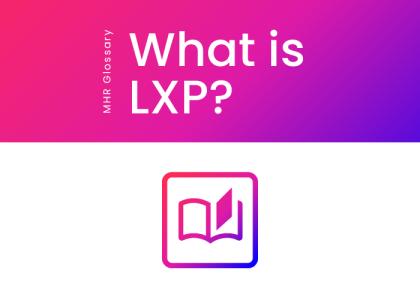Key features of an LXP
While different LXPs will do different things, there are a few key features that have come to define the concept of an LXP. Make sure any software you look into offers these features, or you’ll fall behind others:
Content creation tools
An ideal LXP will have easy-to-use content generation tools. A popular method is drag-and-drop tools. This means that your learning team (or your overstretched HR team!) won’t have to be solely responsible for creating new material. It also means that your in-house experts can lead the charge on areas they know a lot about.
Curation tools
It’s one thing to produce lots of content, but you don’t want there to be an absolute sea of it either. Curation will ensure that the right people get the right material when they need it most. Whether that’s through sorting and filtering or AI tools that recommend content based on the behaviour of the user, there should be plenty of options.
Learning pathways
With so much content to choose from, it can be hard for a user to understand what they need to look at and when. Learning pathways help set out clear routes of learning, letting individuals fulfil objectives through a specific route.
Social learning
One of the key distinctions of an LXP is how they enable social learning. Users can engage with content to find like-minded people, using comments and likes to discuss what’s happening, even making suggestions of other relevant content to look at
Data reporting
Learning relies on being able to prove results and check who’s doing what. A good LXP will provide data reports on the content. Who’s engaging with what? How much? This will help you target future content and ensure certain metrics are being met.
Benefits of using an LXP
There are loads of benefits to using an LXP.
Firstly, and perhaps most simply, LXPs provide a more engaging learning experience than alternatives. The sheer scope of content makes for a wider variety of learning methods, instead of the traditional approach. Different people have different learning preferences, so this will ensure you’re not taking a one-size-fits-all approach.
LXPs also enable a more personalised experience for each learner. Recommendation systems ensure that learners save time and can focus on actually learning. This makes them more likely to engage with that content and can help grow a whole learning culture!
On top of this, social learning ensures that learners are able to see others also engaging in that content. You can see the takeaways of others and share knowledge. Again, this makes for a stronger learning culture, where development for its own sake is valued.
LXPs also have very advanced data reporting features. With better insights, you can improve the quality of your content.
LXP vs LMS: What’s the difference?
There’s a reason for this. The needs of the world of work have shifted. In the past, the big priority for learning was systemic formal training, usually for knowledge sharing and compliance. This priority has a huge amount to gain from the instructor-led, traditional approach to material that an LMS can really help with.
Now, however, more and more organisations are realising that L&D can also benefit from informal learning, which tends to lend itself to more talent development. LXPs can help create a learning culture where spontaneous learning can happen more often. From there, you see employees developing and gaining more wide-ranging skills.
Note that while we’ve shown how an LXP is distinct from an LMS, it’s probably better to think of them as an evolution. You can still pull off the same compliance training, you just get more features.

Implementing an LXP in your organisation
The best way to successfully integrate a new LXP is to create a thorough implementation plan. Work closely with your vendor to understand what implementation will involve and create a team within your organisation to handle things.
Who has ownership of the LXP? Who will be using it on a regular basis? What obstacles do you think you’ll face? Ask these questions and then set some deadlines to hit key goals.
The biggest challenge for an LXP adoption is buy-in. If no one sees the value in the system, they won’t use it. That means that part of your implementation needs to factor in building up this demand internally. This might take the form of creating a champion system, where key team members are chosen to be advocates of the new software and answer questions. Make sure to recognise these people and consider offering out acknowledgements and rewards when people engage with the system.
You’ll also want to make sure you choose the right learning software and create clear and logical learning pathways. Otherwise, someone might open up the system and immediately bounce off.
Once your system is implemented, it’s also important to measure the success of the platform. Set out KPIs for a month, six months and a year after implementation and make comparisons.
Future of learning experience platforms
LXPs have come into the forefront in recent years, but they’re showing no signs of stopping their evolution. With skill gaps being a huge concern for modern organisations, LXPs provide a flexible solution that can empower employees to take charge of their development. Not only does that help each individual employee gain more skills, it creates a culture of learning that builds on itself. This leads to wider organisational success, more agility, and keeping you competitive in a busy recruitment market.
It's clear LXPs are shaping up to be the future of learning and development. But where will they go next?
AI will be an incredibly powerful tool for LXPs as they can help streamline content curation even more, with improved recommendations and could even reach the point of supporting content generation. Machine learning can refine your processes, freeing up your human team to focus on strategy. Chatbots could also be utilised, answering learners’ questions in real time and helping them feel supported.
Data is also key. The best LXPs enable data analytics so that the platform can be improved based on usage. In the future, we’ll see more and more analytical options available, strengthening learning paths and offering up personalised feedback.
Final thoughts
If you’d like to learn more about our learning platforms, take a deeper at our page. It covers everything about Learning from MHR.



